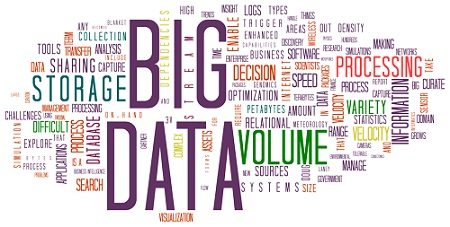The world of information technology is a vibrant landscape packed with terms that can sometimes feel overwhelming. Recently, two buzzwords have risen to prominence: open data and big data. These two very important terms mark the evolution of digital data in the age of the Internet. But what exactly do they mean, and how do they fit into the broader digital ecosystem?
Let’s dive in!
BIG DATA VS. OPEN DATA: SAME BUT DIFFERENT
Big data and open data play different but complementary roles in today’s digital world. While big data typically refers to the massive, complex datasets generated by various private sources, open data is defined by its transparency and accessibility. Together, they’re critical in driving technological advancements and shaping data-driven decision-making across industries.
Here’s a quick breakdown:
- Big data: Refers to vast amounts of data collected and stored in real time, often requiring advanced tools to manage, process, and analyze.
- Open data: Describes data that is made freely available to the public without legal or financial barriers.
Despite their differences, these two types of data can work together to generate powerful insights. When combined, big data’s depth and open data’s accessibility can enhance transparency, improve efficiency, and unlock new opportunities for innovation.
BIG DATA: WHEN DATA ACCUMULATES
We live in a connected world where phenomenal quantities of data are stored at all hours of the day and night. According to IBM, 2.5 quintillion bytes of data are created daily. The term “big data” refers to the vast amounts of information accumulated and stored in real time on servers across the globe.
While retaining data is a step in the right direction, it doesn’t always translate to actionable insights. In fact, it’s estimated that less than 1% of collected data gets thoroughly analyzed. Why? The format and structure often make it too difficult or time-consuming to examine. But as new tools evolve, businesses are beginning to tap into this treasure trove of information, discovering hidden gems within this digital gold mine.
OPEN DATA: WHEN DATA IS OPEN TO EVERYONE
While big data is defined by its size, open data is characterized by its accessibility and use. The idea behind open data is to democratize information for the benefit of the public. Distributed under an open license guaranteeing free access, open data must be available without technical, legal, or financial restrictions.
Open data is structured through standardized formats and methods, allowing data to be easily shared and understood. Businesses and individuals with programming skills can then analyze this data to identify trends and inform the public. Open data fosters collaboration and provides tremendous opportunities to resolve complex issues.
If you want to learn more about the benefits of open data, check out our post on smart cities in the age of open data.
Social media and science as a source of open data
Much of open data comes from platforms like Twitter, where publicly accessible information is available for analysis. Scientists also increasingly publish their findings in open formats, fostering global collaborations that push science forward.
A COUPLE OF IMPORTANT POINTS
Big data isn’t always accessible to everyone. Data gathered by mobile phone operators and banks will never be available to the public. Moreover, this data primarily benefits those who possess it, which can lead to various ethical concerns.
Open data doesn’t need to be big. Modest amounts of data can have a big impact when it’s made public. Municipal information about certain services can help citizens make better decisions or improve their quality of life. For example, wouldn’t you like to know when the swimming pool is least crowded?
COMBINING BIG DATA AND OPEN DATA
So, can the two types of data be combined? Absolutely. In fact, processing and cross-referencing large amounts of data, while certainly a technological challenge, allows information to be presented from new angles.
Example: MIT’s HubCab project
The HubCab Project from MIT’s Senseable City Lab is a particularly interesting example of this. To perform an extensive analysis of mobility in New York City, the team tracked 170 million taxi trips made in the city over one year. The trips were mapped using open data. The aim was to gain insights into travel habits within the city, enabling the identification of patterns that could help reduce the social and environmental impacts of these trips. The principle of “taxi shareability” is central to this initiative. Their study found that 40% of taxi trips could be shared!
THE POWER OF BIG DATA AND OPEN DATA TOGETHER
In conclusion, big data can be used to achieve unprecedented levels of understanding and analysis, while open data ensures that this knowledge benefits everyone. When combined, big data and open data are transforming industries, public services, and society as a whole.
Looking to unlock the full potential of your big data or open data? Consortech’s GIS consultants are here to help you realize your goals! Contact one of our experts today!
DO YOU SEE OPPORTUNITIES FOR YOUR BUSINESS OR WANT TO KNOW MORE?
